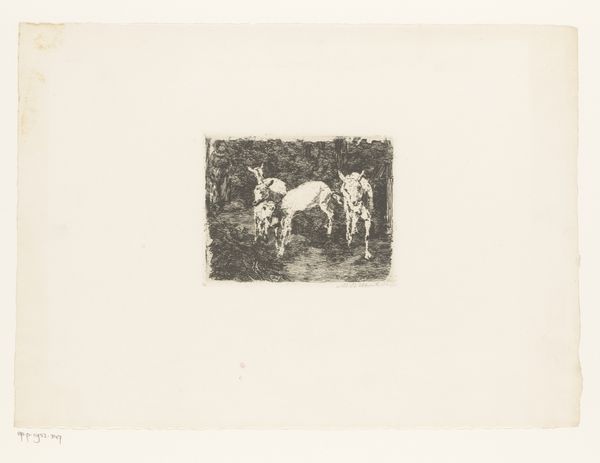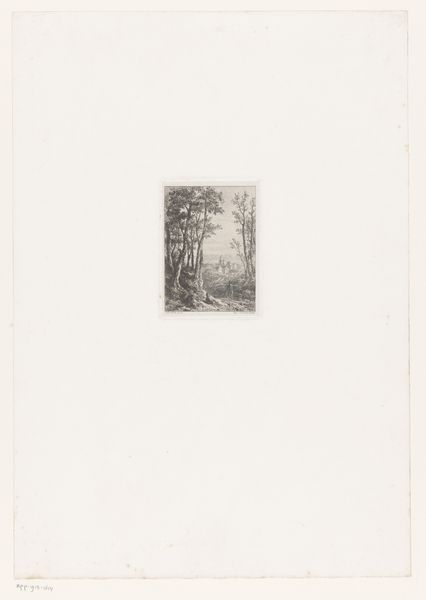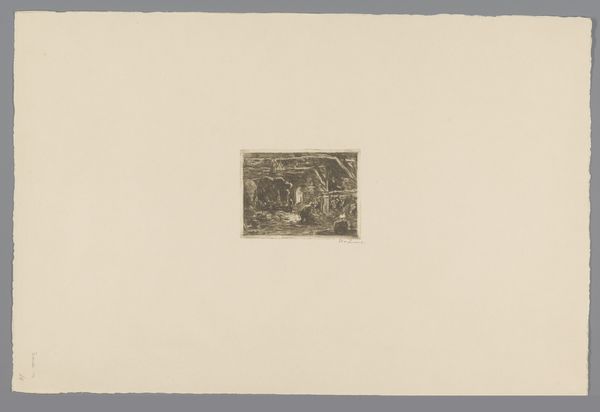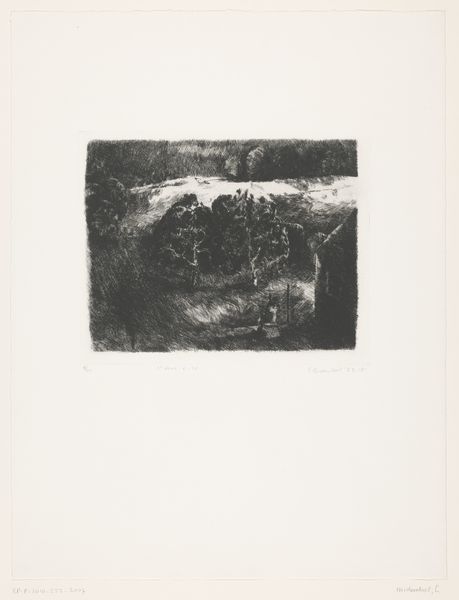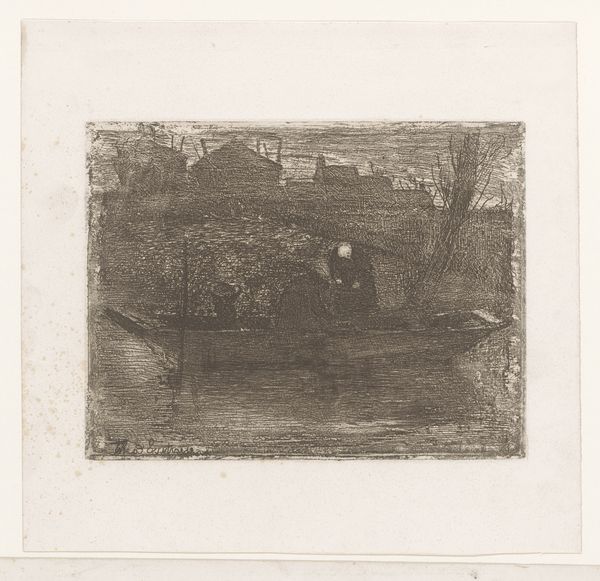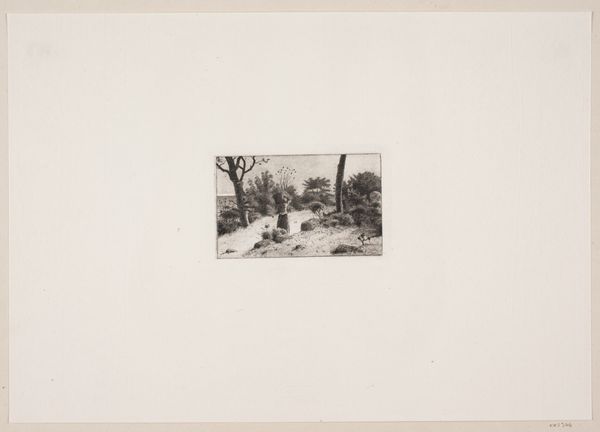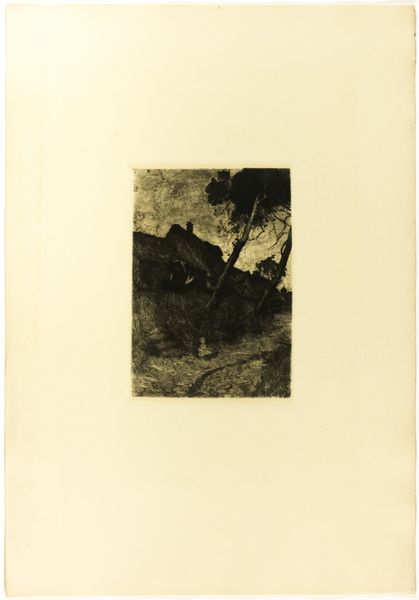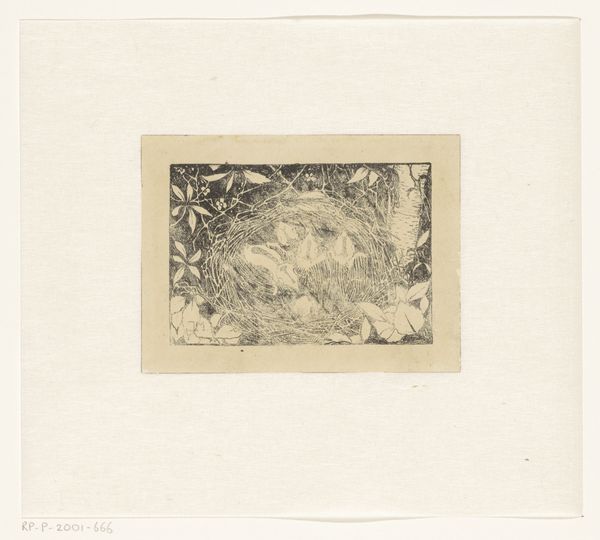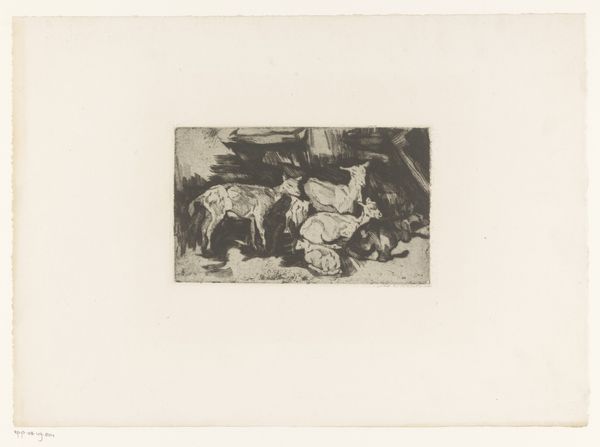
drawing, print, etching, graphite, engraving
#
pencil drawn
#
drawing
# print
#
impressionism
#
etching
#
old engraving style
#
landscape
#
horse
#
graphite
#
genre-painting
#
tonal art
#
repetition of white colour
#
engraving
Dimensions: height 61 mm, width 91 mm
Copyright: Rijks Museum: Open Domain
Editor: Here we have John-Lewis Brown's "Man with Two Horses in a Stable," dating sometime between 1839 and 1890. It's an etching, I believe, giving it this delicate, almost ephemeral quality. The figures seem enveloped in shadow. What draws my eye is how enclosed the composition feels. What do you see in it? Curator: This image resonates with a fascinating period of art grappling with rapid industrialization. Note how the artist uses genre painting to subtly address broader societal themes. The barn isn't just a barn. It becomes a symbol, perhaps, of rural life under pressure. Think about how new technologies and expanding urban centers were transforming traditional agricultural communities. How might this image be a quiet commentary on those changes, portraying a world on the cusp of disappearing? Editor: So, the seemingly simple scene of a man and horses… Curator: …speaks to larger questions of cultural identity and the anxieties of progress. What role does genre painting serve when history painting is still very prominent? It democratizes art to be consumed in printed matter for the wider populace beyond art institutions. It gives them access and insight into what is happening around them. It's not just horses; it is about what the public see and understand through accessible artistic avenues. Editor: That’s insightful. I never considered its accessibility. The focus on daily life gains so much more depth when viewed as a commentary. Curator: Exactly! It’s about unpacking the loaded context and seeing beyond the immediate representation to consider the world as it changes in front of Brown's eyes. Editor: This makes me rethink the whole function of seemingly mundane subject matter of paintings. Thanks for offering your thoughts. Curator: My pleasure. Always good to remember art operates within larger historical and cultural dialogues.
Comments
No comments
Be the first to comment and join the conversation on the ultimate creative platform.
